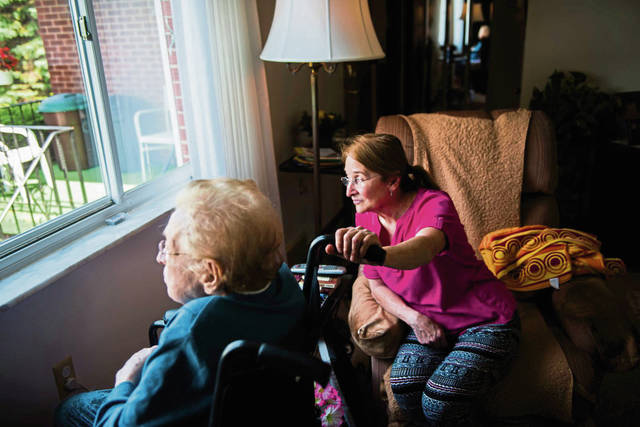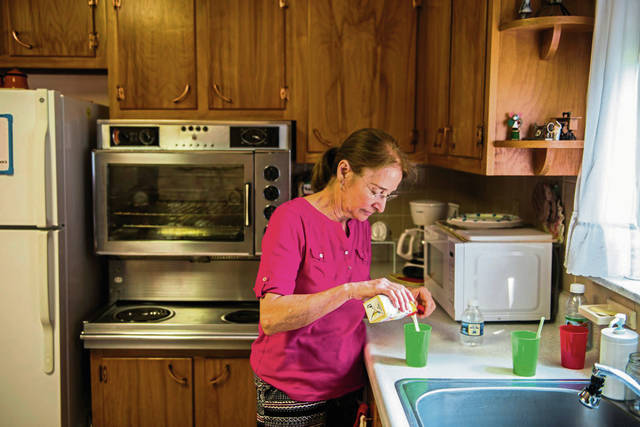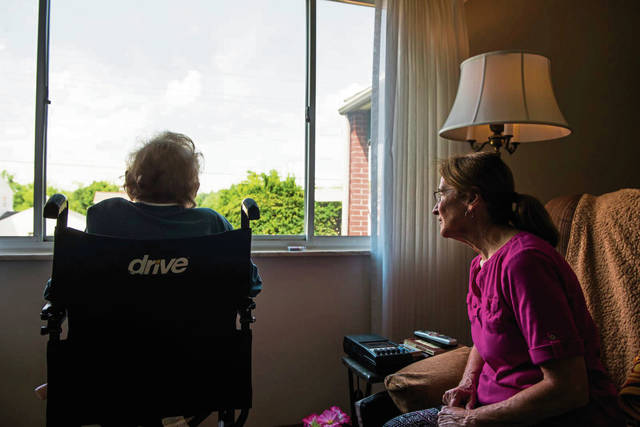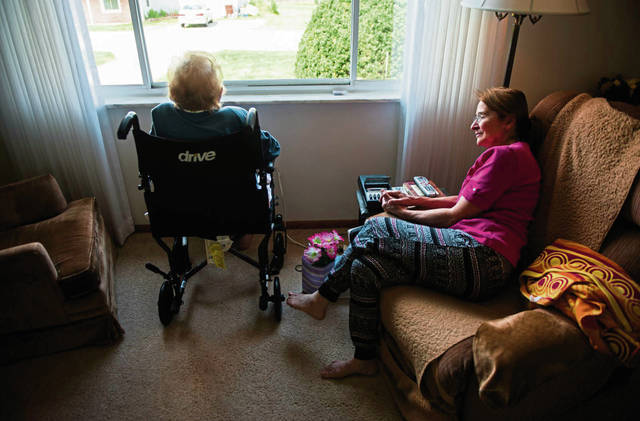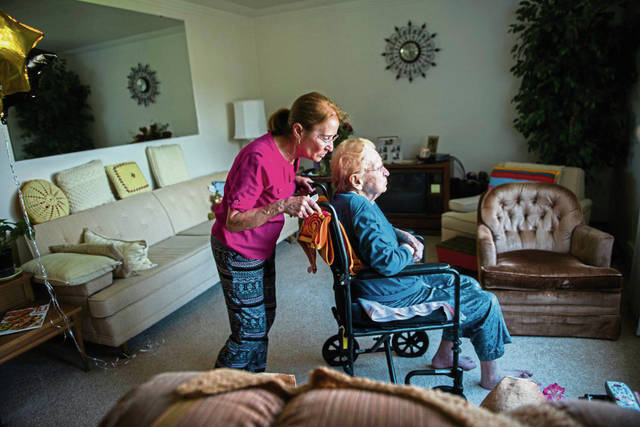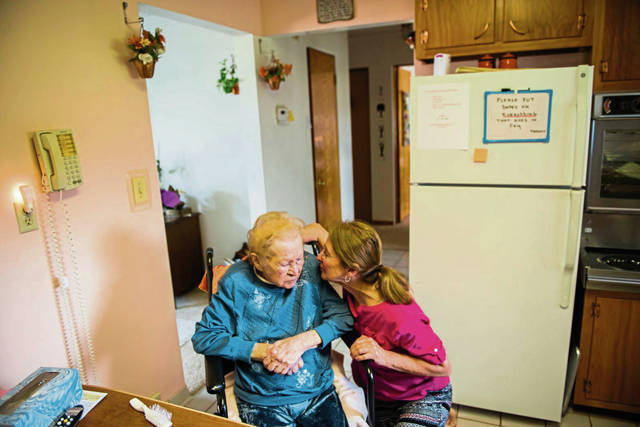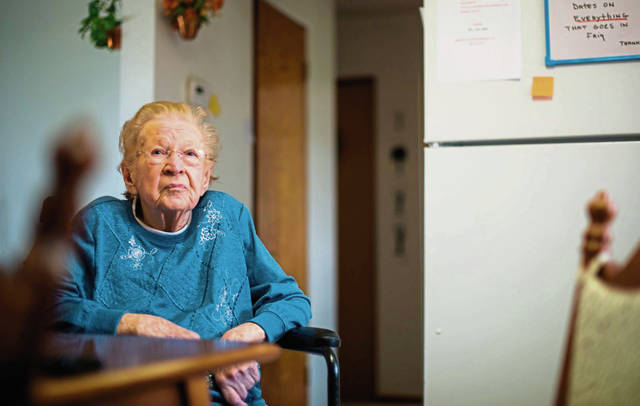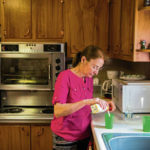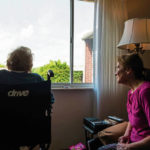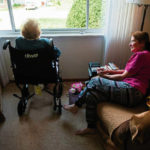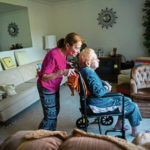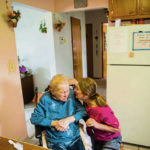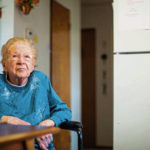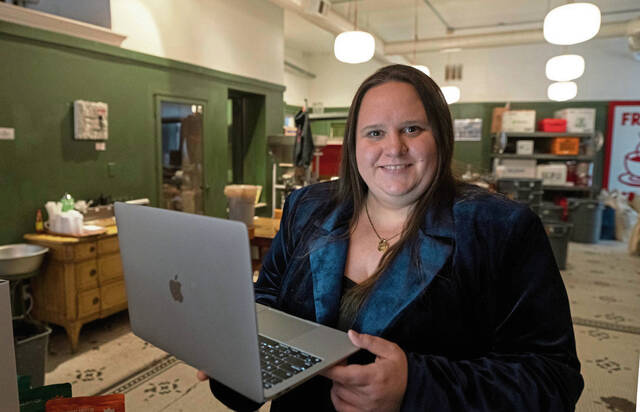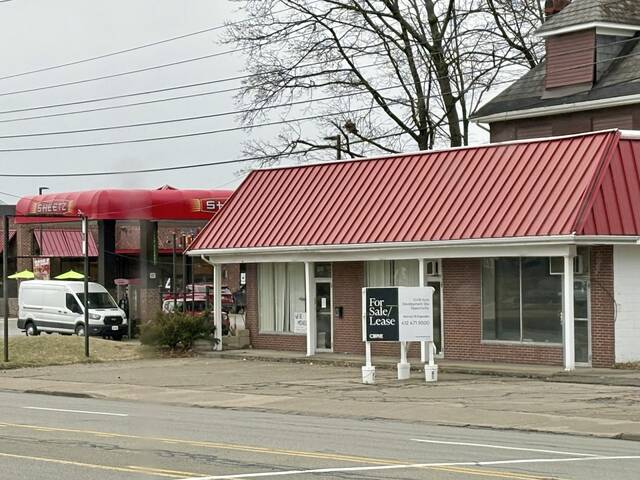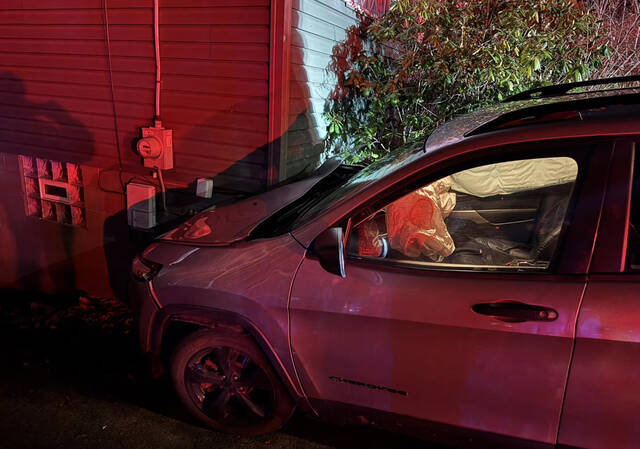Fran Morgante brushed back her mother’s hair tenderly as she offered the tiny elderly woman a drink of water on a hot June day.
Vilma Morgante, who celebrated her 100th birthday June 21 in her Lower Burrell home, never asked much of the world.
Her one desire: to die in the neat brick bungalow she and her late husband, Steve, scrimped and saved for and then built from the ground up seven decades ago.
Frail, suffering from moderate dementia for the previous year and a half and forced to use a wheelchair, she relied on her daughter — a professional violinist with the Buffalo Philharmonic — to steer her through the complex web of rules and regulations that govern the safety net designed to protect the nation’s most vulnerable citizens.
“Years ago, I tried to talk her into coming to live with me, and she said, ‘Chica, I want to die at home,’ ” Fran Morgante recalled.
On July 4, Vilma died at home, one year and two days after qualifying for 24-hour home care — care that never arrived.
Vilma Morgante’s decline began around Christmas 2017 when she suffered a urinary tract infection. She recovered from that in a local nursing home and returned with a walker.
A second hospitalization last summer ended when Vilma was released again to a nursing home. Fran said by the time she got to the nursing home, her mother was coughing and had become very sick.
At Fran Morgante’s urging, she was again admitted to UPMC East and diagnosed with pneumonia and c. diff., a virulent intestinal ailment that wreaks havoc on older victims.
Vilma recovered sufficiently to return home with hospice care. The hospice nurse was limited to twice-weekly visits, so Fran Morgante began filling in the rest of the time. She checked on her mother every two hours to tend to the ravages of c. diff.
At her hospice nurse’s suggestion, Fran Morgante applied for the Medicaid waiver program. On July 2, 2018, she learned her mother was eligible for 24-hour home care.
The waiver was supposed to be a safety net to help low-income elderly men and women eligible for nursing home care get access to services that would allow them to remain in their homes.
Gov. Tom Wolf touted the program that was rolled out in January 2018 under a new managed care contract with UPMC Health Plan’s Community Health Choices program as a cost-efficient, high-quality alternative to nursing home care.
It would provide the kind of care that allowed his 94-year-old mother to remain in her home, Wolf said.
With Pennsylvania on the leading edge of the nation’s so-called gray tsunami — its senior population is the third highest in the nation — tackling a growing need seemed timely and appropriate.
A wall too high to climb
Fran Morgante thought the program was the answer to her prayers.
“Instead, it was the beginning of a wall that has been impossible to climb. It’s a good concept, but it has no internal design to function. It’s so unpredictable,” the soft-spoken musician said.
She went through about a dozen home health agencies trying to find competent aides. A stack of written complaints and documents detail her effort and the failings of many aides.
There was the aide who left in the middle of the night; one who apparently manhandled her mother, leaving the frail woman with a badly injured arm that required a consultation with an orthopedic surgeon; the aide who never showed up; one who put damp sheets on her mother’s bed; the one who was caught on camera sleeping while Morgante’s land line rang endlessly; an aide who slept while the elderly woman struggled by herself to reach the bathroom; and an aide whose long acrylic fingernails ended in a point.
Finally, in April, Fran Morgante found Tammy Orzehowski, an aide from the Serenity at Home Care agency who showed up faithfully to work from 7 a.m. to 3 p.m. and became a trusted friend.
But the long days of covering her mother’s care 16 hours a day on weekdays and around the clock on weekends left Fran Morgante drained and bitter toward a system that had promised far more than it could deliver.
“The agencies have no standard policies. You don’t know where to complain. How many offices in the government do you call? It’s been a year, and I haven’t seen any forward movement. … We’re having all of these discussions and it seems like the water is so smooth, but there is a tsunami underneath. There is a sleeping giant because of all the people who have these problems,” Fran Morgante said.
Program’s ‘casualties’
The response that sticks in her mind is the comment from a Harrisburg bureaucrat who sympathized and told her “we knew there would be casualties” with the new program.
State records show 81,493 low-income elderly adults in 14 Southwestern Pennsylvania counties, including Vilma Morgante, qualified for the waiver program at a price of $1.57 billion last year.
The waiver is among a series of patches designed to mend growing holes in the safety net many thought would take care of Pennsylvania’s oldest and most vulnerable citizens. The familial culture that once masked such needs has extensively changed: families are smaller, women are in the workforce and younger members move away to where they find jobs.
Many mistakenly believe Medicare pays for long-term care for the elderly, but the federal program pays for only limited recovery stays in nursing homes. After that, as an individual’s resources dwindle, Medicaid, the joint state-federal program that pays for about half of the nation’s long-term care costs, kicks in.
UPMC Health Plan was Vilma Morgante’s Medicare provider. But the new Community Health Choices contract required it to oversee direct care services for individuals under the Medicaid waiver.
An aging state
The waiver program was seen by many as a way to get a handle on rapidly escalating costs of serving the state’s burgeoning elderly population. Nationally, those 65 and older account for about 15% of the population; in many Southwestern Pennsylvania communities, they already represent nearly one in three residents.
The needs of both low- and moderate-income elderly residents are expected to escalate as their numbers swell over the next decade.
Carnegie Mellon University economist Robert Strauss has studied the numbers. He worries that Pennsylvania, which must underwrite about half of the costs of Medicaid, has yet to address the severity of the looming bill.
Projections for the region’s growing elderly population suggest the 14 Southwestern Pennsylvania counties alone will include about 91,000 individuals facing cognitive issues from conditions such as Alzheimer’s and dementia by 2030, Strauss said.
“That costs a fortune to address. We’re in the midst of a firestorm already, but no one sees the smoke or flames. The General Assembly and the governor are being fairly successful at ignoring it,” Strauss said.
Direct care services that can be covered under the Medicaid waiver include a wide range of services designed to help keep disabled seniors in their homes. They include underwriting minor home modifications such as ramps, exterminating insect infestations and providing day-to-day assistance with dressing, bathing, eating, laundry and cleaning.
Under managed care, UPMC Health Plan’s Community Health Choices is paid a flat fee for each person enrolled in the program. The company makes its profit from keeping costs below that figure, which is the norm in managed care.
Direct care puzzle
John Lovelace, president of government programs at UPMC Health Plan, said rollout of the new program has been relatively smooth, but he conceded that balancing the direct care portion of the equation has been a challenge.
UPMC Health Plan had no experience with home care. Although its staffers coordinate care, actual services are contracted out to many agencies scattered across the region.
Lovelace declined to discuss Morgante’s situation, citing federal health care privacy regulations, but said problems securing home care services have occurred.
“Staffing of direct care has been a problem for a long time. It’s a problem in nursing homes and in home care. It’s hard work,” he said.
And an improving economy where workers who might have considered home care can make more working in the retail sector has only exacerbated the shortage, Lovelace said.
Attracting dependable aides has been a decades-long issue for the industry.
Carl Lloyd launched Serenity at Home Care — the Monroeville-based agency that sent Orzehowski to the Morgantes — after struggling to find care for his parents. He echoes the concerns of experts who bemoan the shortage of direct care workers. He intentionally limits his client base to ensure he can provide consistent quality care.
“We answer the phone 24-7. I have 22 clients, and what we do, we do it right,” he said.
“It’s a really bad situation out there. I could hire 10 people every week. But then we’d have a bunch of 18- to 22-year-olds hurting people. … You hear a lot about that kind of thing — people getting robbed, stolen from, aides leaving in the middle of the night,” Lloyd said.
Advocating for better care
Jeffrey Weinberg of Pittsburgh said that’s why he set up shop as a certified patient advocate. Weinberg learned the ins and outs of elder care during the 12 years he spent as director of geriatric services for Excela Health.
He has private clients and is under contract to the Multiple Sclerosis Society to advocate for its members throughout the region.
Like Lloyd, he has heard stories echoing Morgante’s many times.
Weinberg said there are two components to the problem. On the one hand, the system is so complex that it is difficult for families to learn just what they are eligible for and how to access it. And on the other, the shortage of direct care workers leaves providers unable to fill the needs of everyone who qualifies for care.
“The governor can say all he wants, but (direct care workers) are making $10 an hour. What you end up with is people who can’t get a job anyplace else. They do get trained and they get criminal background checks. They can teach them how to do the job, but they can’t teach them to show up for work,” Weinberg said.
Lovelace said experts are working to find ways to make home care a viable career alternative for more people and to make the system work for those who need care.
UPMC is striving to create a career ladder in the home care workforce and improve retention rates for direct service workers, he said.
Designs for the provision of care also may evolve.
It might mean looking to family and friends for check-ins, taking a client to adult daycare for eight hours a day or relying on emerging technologies to help care coordinators ascertain whether needs are being met and where there are shortfalls, Lovelace said.
“But even the best care coordinator or advocate can’t conjure up people who don’t exist. We try very hard for everyone. Our job is to see that you get what you need. We’ll never be perfect, but I think we’ll make strides,” Lovelace said.


